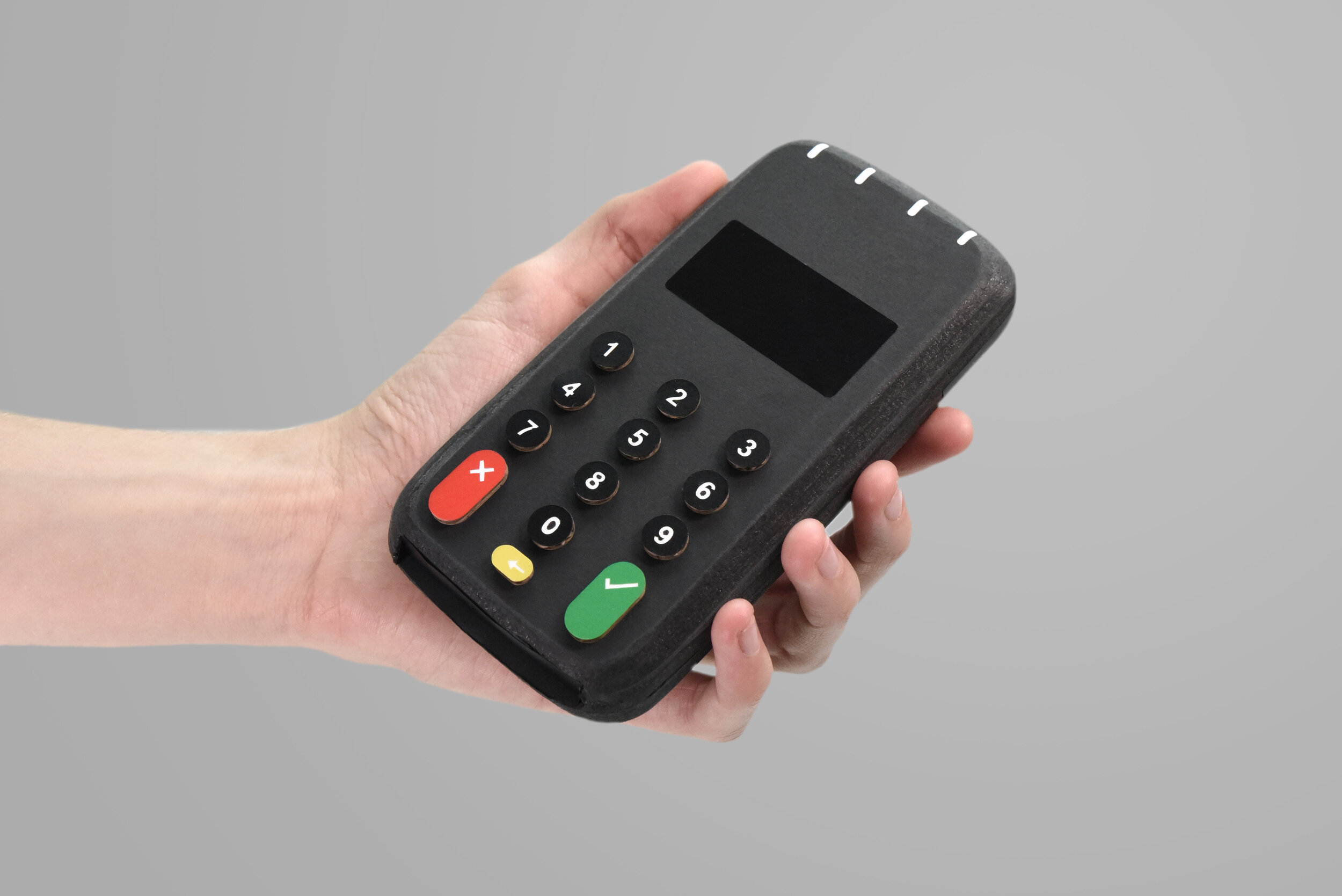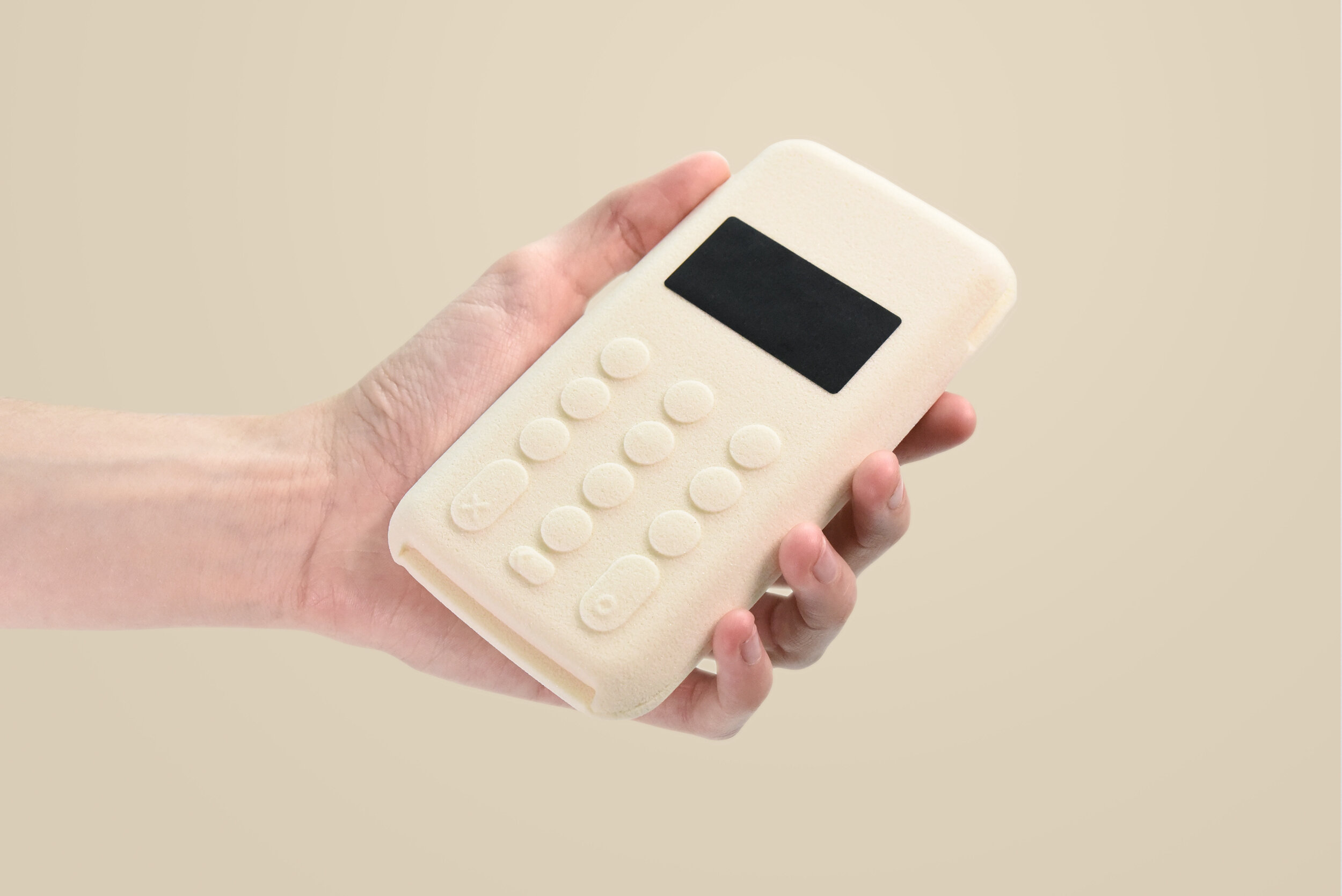How to make a product prototype
CARD MODEL - Evaluate proportions and layout
What is a product prototype?
Prototyping is an essential element of the product design process; they are built at multiple stages within the process so that industrial designers and engineers can test and assess their design solutions in a real-world context. A prototype is a three-dimensional representation of a product idea, it could be a simple hand fabricated model, 3D print or a highly refined version produced by a professional prototyping company. During the product development process many prototypes are likely to be produced, refined and tested before the product can be manufactured in volume.
A prototype is used to test a solution with potential users to evaluate usability, performance and function. A good prototype can also help effectively communicate your idea with potential investors, buyers/customers and end users.
Prototyping begins with low-cost materials, basic forms and key functions. As the design concept is developed user feedback is gathered, following which a process of iteration should take place. Changes should be made based on feedback and learning from previous prototypes with the following prototyping using refined materials and incorporating more accurate functionality, whilst improving performance to align with the functional requirement specification.
FOAM MODEL - Explore form
Why should you prototype your product?
A prototype is all about learning, it’s the best way to evaluate a product idea or concept and discover how your solution will function in real life environments and conditions. Validating the design concept throughout the development process helps to form confidence in the solution and minimises risk when entering volume production.
An effective prototype lets you gather feedback from potential users on usability and performance and identify any design issues. Prototypes allow you to test and refine functionality. An idea may seem feasible on paper or in 3D cad, but it’s much easier to identify and understand challenges once your idea becomes a physical object.
Designers can typically visualise how a sketch or render can translate into a three-dimensional object; however, this is not the case for all people. A physical prototype can therefore be a great tool for effectively communicating your design with those less familiar with your idea that may have difficulty understanding sketches and renders. A prototype is also a great way to help convey scale as well as how functionality and interaction with the product is carried out.
Selection of colours, materials and finishes is a crucial element of product development. Prototyping can also be a great way to assess materials performance characteristics and properties. Individual components can be produced in different engineering grade plastics to test suitability prior to committing to tooling and production. Finished prototypes rapidly allow a designer and client to present a design concept in a variety of colours and finishes to key stakeholders or end users to gather feedback. Exploring the colours and finishes can be essential when positioning a new product in the market.
3D PRINTED PROTOTYPE - Integrate electronic hardware
The prototyping design process
The product design process is a methodology that provides a solution-based approach to solving problems. Prototyping should be used at multiple stages of this process. You can use it to rapidly explore, experiment, learn, understand and test a design. Prototyping itself should work much like a positive feedback loop:
1. Make prototype
2. Test your prototype and get user and functional feedback
3. Develop the design by implementing feedback
4. Repeat
Based on feedback from prototype testing, designs and ideas should continue to be iterated until the final solution is achieved. This continual process of iterative prototyping, testing and development helps keep the user at the centre of your project.
What type of prototype should I make?
The first question to ask is what is the purpose of the prototype? What are you trying to discover or prove about the product concept? Aspects of the design concept to evaluate and explore could include scale, proportions, ergonomics, mechanical functionality, colours & finishes, material properties, location of interaction points and user interface. Once the purpose of the model is established, consideration can then be given to determine which type of prototype is most appropriate and which tools should be deployed to aid its creation
To find out more about the types of prototypes that can be produced go to our product prototyping page.
Works-Like, Looks-Like & Looks-like works-like?
Throughout the product development process the design will need to be verified and validated. As it moves through the development stages several prototypes may be needed. Prototypes can be created to explore function or form or both. The phrase ‘looks like, works like model’ is often used to describe the prototypes key purpose.
A ‘looks like’ prototype or model can be produced to represent the designs aesthetic or feel. The prototype is often non-functioning, for example, a prototype of a consumer electronic product wouldn’t contain functioning electronics. Its purpose is to gather valuable feedback from end users, buyers, investors, etc to help give creation direction for the renaming development program.
PRESENTATION PROTOTYPE - Pre-production prototype
Key benefits
In a challenging business environment where products need to be developed at an increasingly rapid rate, it’s crucial your business can fast & efficiently develop a product. Prototyping should be an integral part of the product development process, if deployed correctly prototyping can significantly reduce time, cost and risk, but more vital is to create a product that performs on all levels. Contact us if you would like to learn more about our in-house prototyping services.




